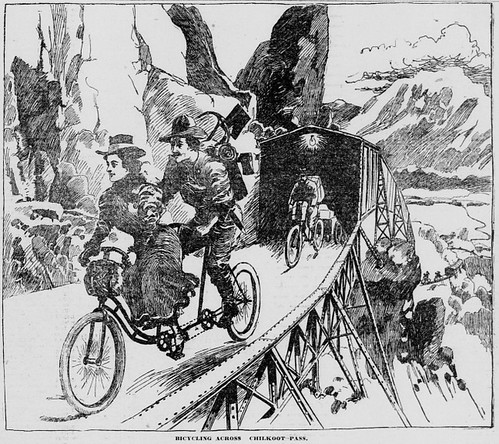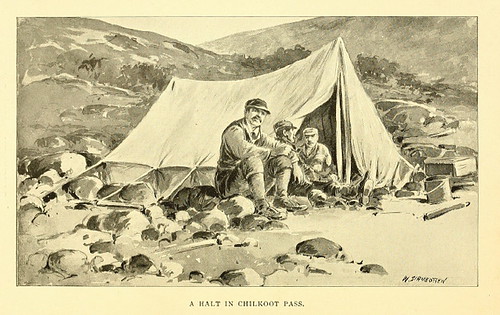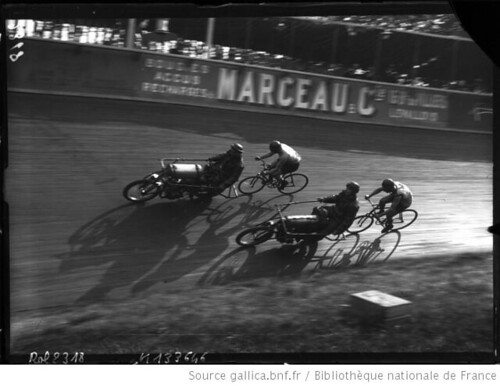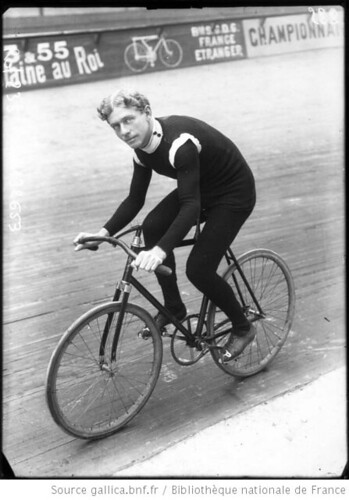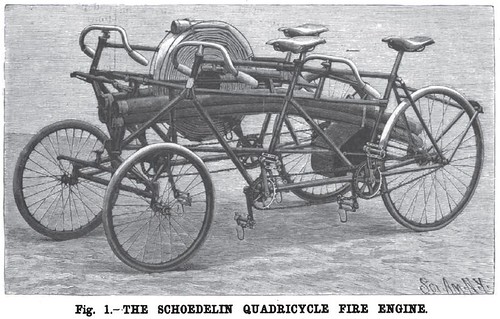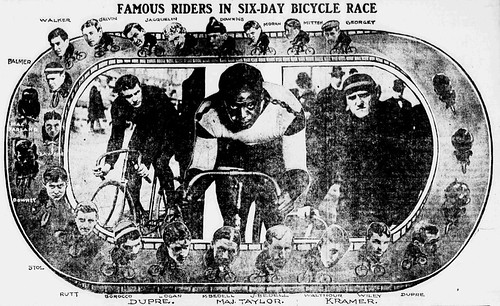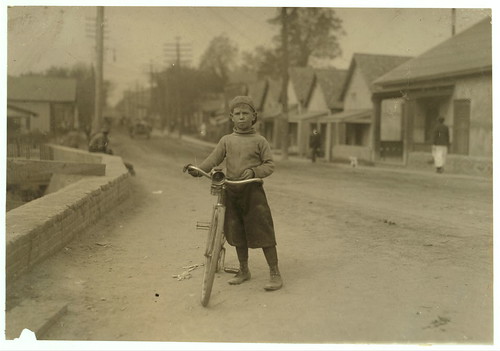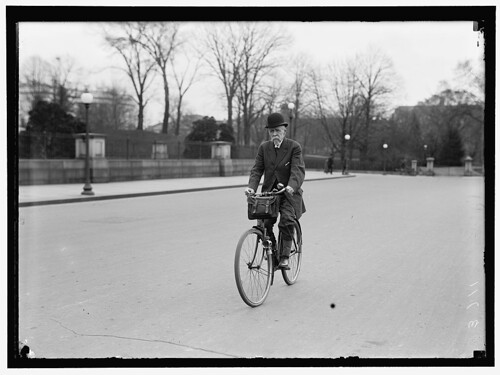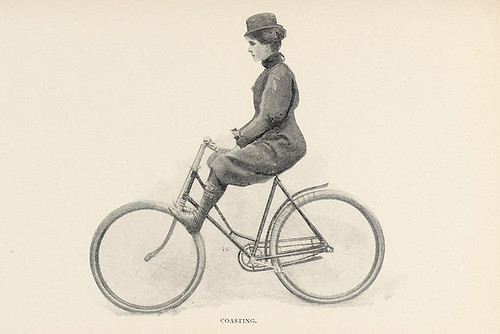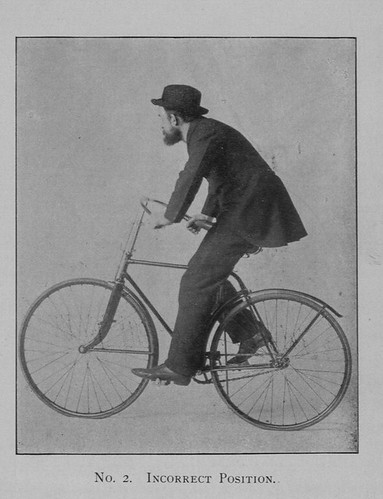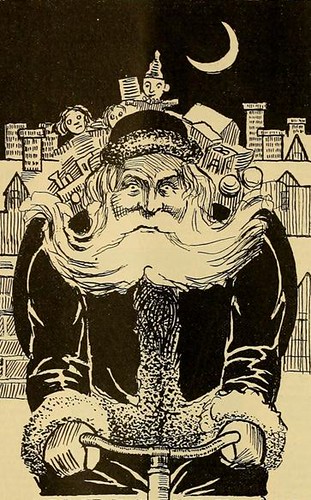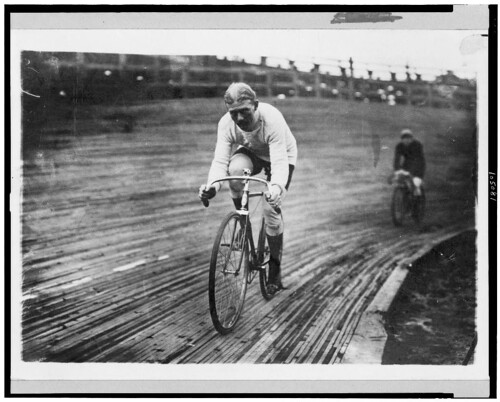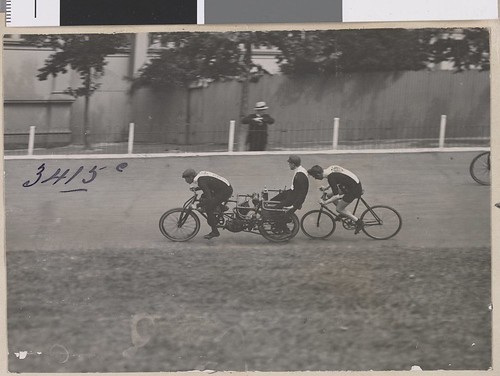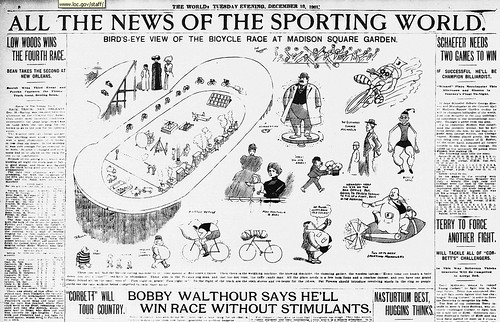When you think about it, improving a bike's light or reflector system to enhance visibility and safety is an ideal Kickstarter direction - the costs to "kickstart" a new commercial product can be within Kickstarter's audience and if presented correctly, such products seem more about "fun" and being hip than simply about being safer (which is boring - and with Kickstarter, boring = no funding).
Today there are two "live" Kickstarter projects related to lighting products that I will look at . . .
As of today, this theft-resistant front light is already 225 percent funded - wow! What makes this proposal so darn attractive for Kickstarter funders?
* The video is clever, fun to watch, yet seems authoritative and the proposal's logic sensible - even unassailable.
* It addresses a real problem - theft of stuff off parked bikes. And we wouldn't want to end up like their friend, whose light was stolen and then was hit by a car.
* Even though designers and builders of a theft resistant bike light wouldn't need to be MIT engineers, these guys' bring those credentials (and wear the T-shirts to prove it).
* For $50 bucks support, they promise to send you one of the things to own, even though the "expected retail price" is $70 - so it's a deal! And note that the overwhelming support for this project is at this level. People are supporting this because they want one, and perhaps because they think they will get one cheap.
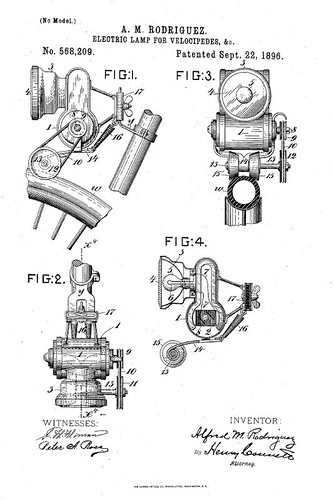
Electric lighting for bikes is this old - but even then they understood theft, as it notes the "principal object of the invention is to provide a bicycle with a detachable lamp, including a dynamo . . . "
Let me make a few critical comments . . .
* In the video, they show the critical bolt that makes this thing theft resistant. The video has been updated to state that they have, thanks to comments, changed the bolt design to make it more theft resistant. This, however, gets to the main drawback with this thing - which is that in the places where people steal lights off bikes a lot, you are operating on faith when you walk away from the bike and don't take attractive crap bolted to the bike with you, fancy bolt or no fancy bolt.
* Uh, this light just makes itself even more attractive for theft with it's "sexiness" (hipsterishness). Isn't that obvious?
* Well, I suppose other people are more organized and actually of late my bike tools are pretty well organized (sort of - in the sense that I can usually eventually find things) but really, do I want not one but two special allen key like things to have to keep track of?
* The design, which maximizes theft resistance, is otherwise not so great, MIT or no MIT. In particular, this is a "weight forward" design which means every time you hit a bump, the light is inclined to move down. Or up. So you then grab it and shift it back to point in the right place - but with the "tighten the metal clamp" approach used here, this isn't as easy as with the usual rubber ring holding light in place approach. I guess they figure you just tighten the clamp so tight it won't move. Maybe that will work. Make sure you have the special wrench with you.
The main issue I guess I have is that these characters say they see cycling in cities as a "battle" which is made clear in the first part of their video (which is in daylight and has nothing to do with lighting) that shows typical urban carefree youth riding in traffic illegally and idiotically. Motorists care about one thing - getting there faster. When you ride like a fool, they worry you might cause an accident that will delay their arrival wherever it is they are going and it makes them suspicious of all cyclists. Is this really helpful for the cycling community? Because like it or not, the motorists aren't going to perceive two cycling communities - the fool one and the other one. (/end of rant) Anyway, I don't think a mildly theft resistant light really helps with the urban bicycle "battle."
These urban warriors are learning as they go. Not only have the updated their anti-theft bolt design, someone pointed out that their understanding of guns wasn't very accurate. In their FAQ, they originally had this:
barrel of a revolver?
4. Why does it look like the
As you know, city biking can be a battle. We captured the struggle of the urban cyclist in our design.
Someone must have written in that the thing doesn't look like a gun barrel, but the revolving chamber where the bullets go. So now it reads:
cylinder of a revolver?
4. Why does it look like the
As you know, city biking can be a battle. We captured the struggle of the urban cyclist in our design.
Hopefully that isn't supposed to suggest we carry while riding. And forgive me if I somehow doubt the urban battle credentials of someone who doesn't know the difference between a gun barrel and a revolver bullet chamber.
But wait - there is another Kickstarter bike light project underway, and unfortunately I actually have a twitchy impulse to back this one. Ack!
Oh, I hate to admit it, but for me unlike the gun-based project first discussed, this is sexy sexy sexy. Up to a point . . .
For someone who rides back and forth to work every day, particular during the season just ending (when it is dark either in one direction or for a while, both) an annoyance is the need to rely on batteries for lighting. It doesn't feel very green. (Yes, there are hub dynamos and so-called bottle dynamos but no thank you.) I have rechargable batteries but still, it isn't great.
This thing is like free power! A single unit that magically (actually it uses "eddy currents") pulls power from the rim of a spinning wheel without making contact, then drives LED lights facing either front or back that are in the same compact unit. Couldn't be simpler! (It does take away some of the power you would otherwise be using to propel the bike, but much less than a dynamo hub, apparently.)
And people like this idea - although as of this minute he has yet to reach half the $50,000 he is seeking, three more backers have joined just while I was composing this blog post. So I think he'll get to his $ target.
Again, this is a project where most of the backers are planning on acquiring the device (or devices - separate price if you want a front version and a back one). The pitch is that the price here is a good one (or at I think that is what is meant by "We will never produce it again in this form, so you get a unique fascinating high tech product much sooner than anybody else at a price considerably lower than the normal market price (if we succeed to jump on the market).")
So, where do I see problems with this? Well, like most simple generator set-ups that provide direct power to the light, when you stop, the light goes out. In order to have continuous light you have complicate things with chargers and batteries, which in this case would eliminate the elegance of the "all in one small unit" design here.
For myself, I'm doubtful that having a light that hangs off the side of the brake boss (as he describes it) would be a very durable location. For whatever reason, I would expect to break the one off the rear brake in about a day (by accident). And it wouldn't work with a bike with any sort of rack on the back, which for commuters is fairly common.
For some people, the less elegant approach of a generator unit that would have to be connected by wires to the lights would probably be better. The developer suggests that might be part of a future version. As clever and elegant as this is, I don't think I'll be signing away $199 today.
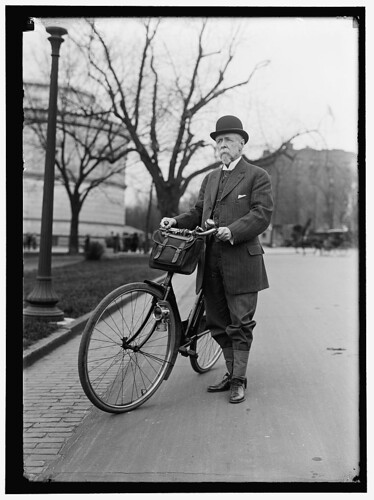
This Assistant Secretary of State didn't have to worry about theft or power for his lighting system in 1914, I suspect




